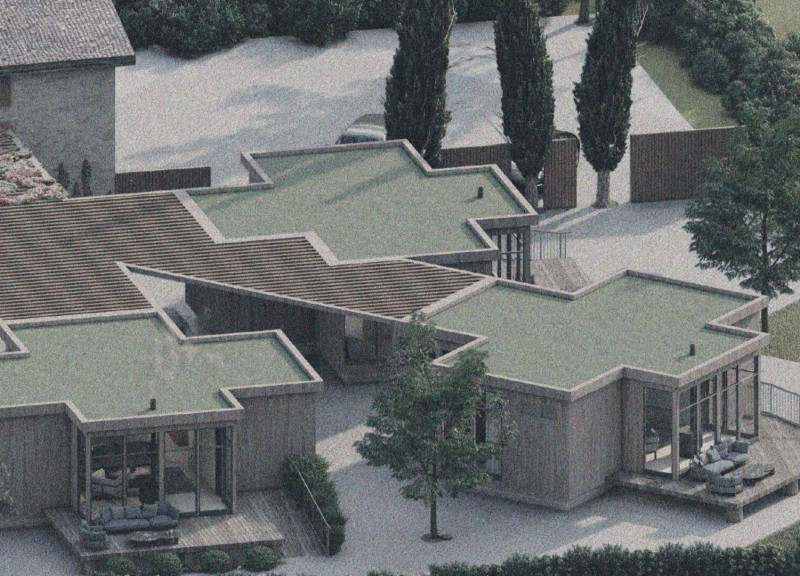5 key facts about this project
The DIONYSOS project is located in Italy, a region known for its rich history of winemaking. The design reflects the traditions of viticulture that stretch back to ancient times. Named after Dionysus, the Greek god of wine, the project features a series of guest houses that provide a unique experience in a landscape filled with cultural significance. The aim is to create spaces that harmonize with nature while promoting sustainable practices.
Guest Houses
Each guest house is designed as a small, cross-shaped hut that follows the sun’s movement. This orientation allows guests to enjoy varying light and warmth throughout the day. Inside, cupboards replace traditional walls, creating an open and inviting atmosphere. This feature enhances social interaction, allowing guests to feel more connected to their surroundings.
Tasting Area
The tasting area is an important part of the design, situated within an existing structure that has historical value. An extension was built by carefully removing a dilapidated section, allowing the new design to blend with the old. The choice of materials is intentional; warm wood interacts with cool stone, providing a sensory experience that connects visitors with the essence of the land.
Circulation and Atmosphere
Paths between the guest houses are guided by a canopy that plays with light and shadow. This feature enhances the visual appeal of the space and guides movement, making it easier for visitors to explore. The design encourages interaction and creates inviting transitions as guests move through the landscape.
Structural Considerations
The guest houses are raised on crawl spaces, a design choice that helps prevent dampness and improves structural integrity. This elevation also provides better insulation for the floors, ensuring comfort for guests. The emphasis on local materials shows a commitment to sustainability and respect for the local environment.
The overall design brings together historical context and modern living, creating spaces that invite engagement and appreciation of Italy’s deep-rooted winemaking tradition. This thoughtful integration of form and function serves to enhance the visitor experience.






















































